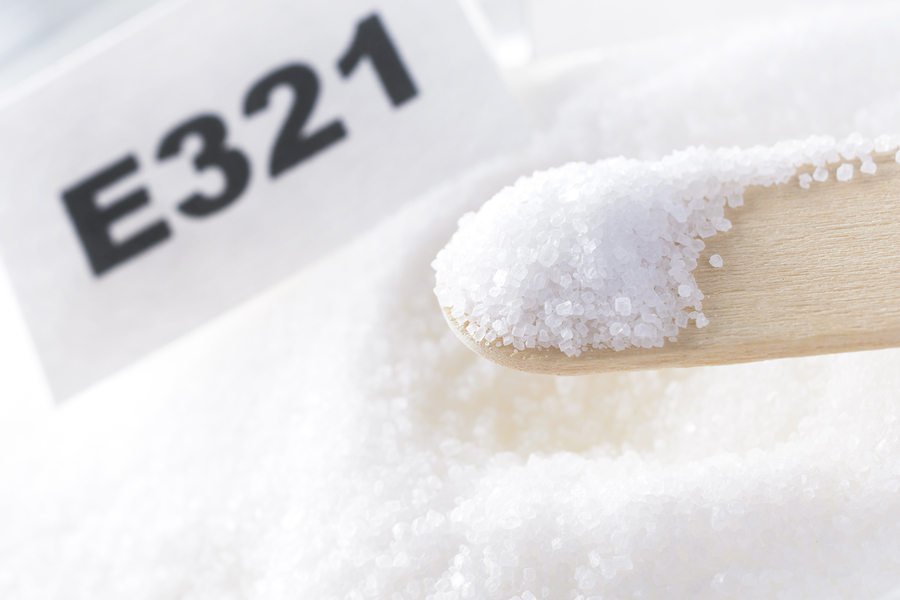
This post may contain affiliate links. We are compensated for referring customers to our affiliate partners.
All dog foods use some method of preservation. This keeps the food from spoiling and reduces the likelihood of foodborne illness. Unfortunately, some of these preservation methods can be very dangerous. Chemical preservatives and over processing can cause digestive issues and may even be toxic, causing chronic illness. So it is important to pay attention to preservatives when shopping for healthy dog food.
Chemical Preservatives To Avoid
When shopping for a dog food, you should always start by reading the ingredients. Even if most of the ingredients are healthy, if the food contains a chemical preservative you should look for another brand. Recognizing chemical preservatives can be hard, so we’ve put together a list of ones to avoid:
- Butylated Hydroxytoluene (BHT): BHT is an antioxidant preservative that preserves fat and prevents food from going rancid. BHT is a carcinogenic has been linked to cancer in lab animals.
- Butylated Hydroxyanisole (BHA): BHA works similarly to BHT and is often used in conjunction. It is an antioxidant preservative that prevents both fats and oils from spoiling. BHA, like BHT, has been linked to cancer.
- Ethoxyquin: Ethoxyquin is a banned preservative in Australia and the EU. It’s primary use is as a pesticide but it has been used to preserve foods from spoiling. Ethoxyquin is linked to kidney and bladder failure, digestive issues, and stomach and colon tumors.
- Propylene Glycol (PG): PG is a chemical found in antifreeze that is used in food to stabilize vitamins and add texture and sweetness. PG has been linked to liver problems and cellular damage.
- Tertiary Butylhydroquinone (TBHQ): TBHQ is another fat preservative that helps extend shelf life. The World Health Organization has found that prolonged exposure to TBHQ causes cancer and cellular damage.
- Propyl Gallate: Propyl Gallate is a fat stabilizer been banned from the United Kingdom because it is linked to blood disorders. Studies have also linked propyl gallate to allergies, skin irritation, and cancer.
Some Healthy Preservative Methods
As you can see, most chemical preservatives can be toxic to your dogs. So you want to look for more natural preservatives. One of the best ways is to find a healthy dog food that uses healthy preservation methods rather than relying on additives to protect their food. Here are some of the common, healthy preservation methods used by dog food manufacturers:
- Freeze-Drying: Freeze drying is a mechanical process that quickly freezes the food then uses a strong vacuum to remove the ice. This removes the moisture and leaves the food completely dry and ready to be stored. Freeze-drying is great because it leaves most of the nutrients intact.
- Air Drying: Air drying is a cooking method that dries the food on low heat. This removes the moisture and helps preserve the food. Unfortunately, the heat air-drying can cause the food to lose some of the nutrients. This method is still preferable to chemical additives.
- Refrigeration: A lot of fresh pet foods rely on freezing or refrigeration to preserve freshness. Keep food cold keeps the ingredients stable and prevents foodborne illness. It also preserves the full nutritional value of the food, but can be more costly to the consumer.
Healthy preservation methods are a great way to ensure that food is well preserved. However most of these processes can be really costly, so they can be more expensive. So another option you can pursue is natural preservatives.
Natural Preservatives That Are Good For Your Dog
There are many natural preservatives that can be added to dog food. Many of these not only preserve the food but also provide some extra nutritional value. So when shopping for a healthy dog food, look for these preservatives in the ingredients panel:
- Vitamin C: Vitamin C, often listed as “ascorbic acid,” is a natural preservative humans have been using in their own food for centuries. Vitamin C is an antioxidant that works to stabilize fat and prevent food from going rancid. Plus it is a necessary nutrient for your dog, so it is a great natural preservative for dog food.
- Vitamin E: Vitamin E, also known as “Mixed Tocopherols,” is another natural preservative that bolsters dog nutrition. Vitamin E is an antioxidant preservative like vitamin C and will stabilize fat and oils. Vitamin E is an essential nutrient to dog health, supporting healthy coat, skin, and joints, so it is a really great option for preservation.
- Potassium Sorbate: Potassium sorbate is a potassium mineral salt. Like vitamins C and E, potassium is an essential nutrient for the healthy and well being of our dogs. Potassium sorbate helps reduce the growth of fungus and microbes, helping extend the shelf life of food and reducing the risk of foodborne illness. Potassium sorbate also helps the food taste great, so it’s a great natural preservative.
- Rosemary, Thyme, and Oregano: Rosemary, thyme, and oregano are all natural preservatives that are safe for dogs. These herbs are natural antioxidants so they helps stabilize fat. Dogs also love the taste of herbs so it’s way to bring a robust flavor the food while making sure it is safe to consume.
- Green Tea Extract: Green Tea is loaded with antioxidants, so it is a great natural preservative when extracted. The antioxidants from green tea can stabilize fat and oils and prevent dog food from becoming rancid.
So as you can see there are many options besides harmful chemicals to preserve dog food. Between high-quality preservation methods and natural additives, there is no need to feed your dog the risky preservatives. So next time you are shopping make sure to carefully read the label and you can find a truly healthy dog food free of harmful chemical preservatives.
